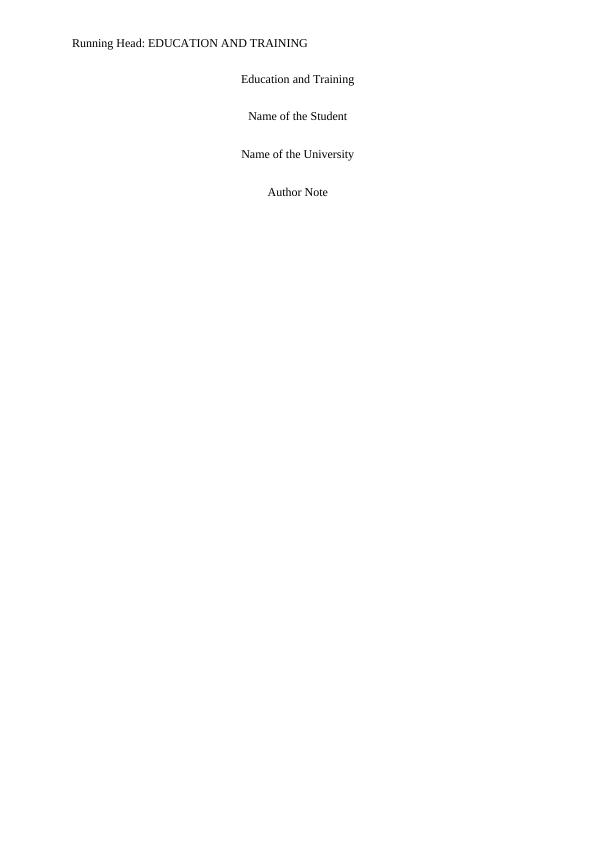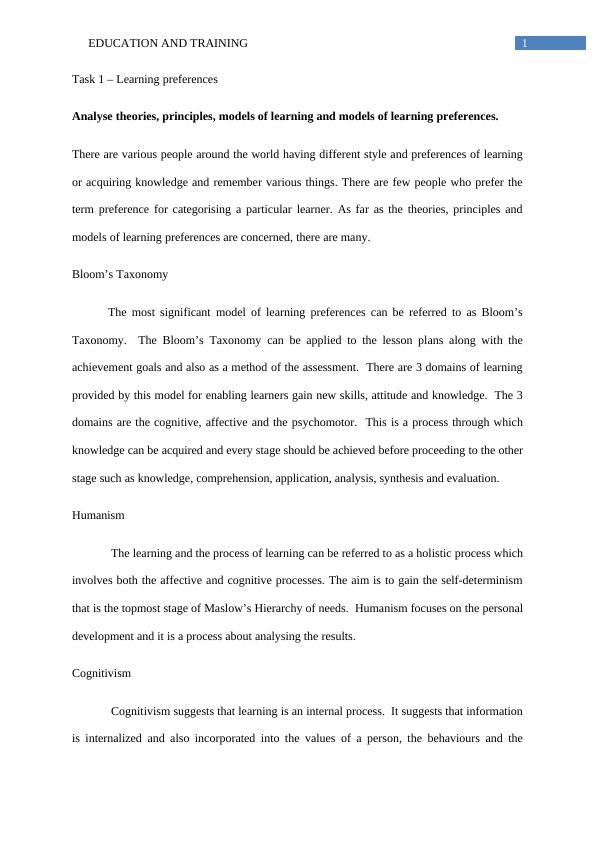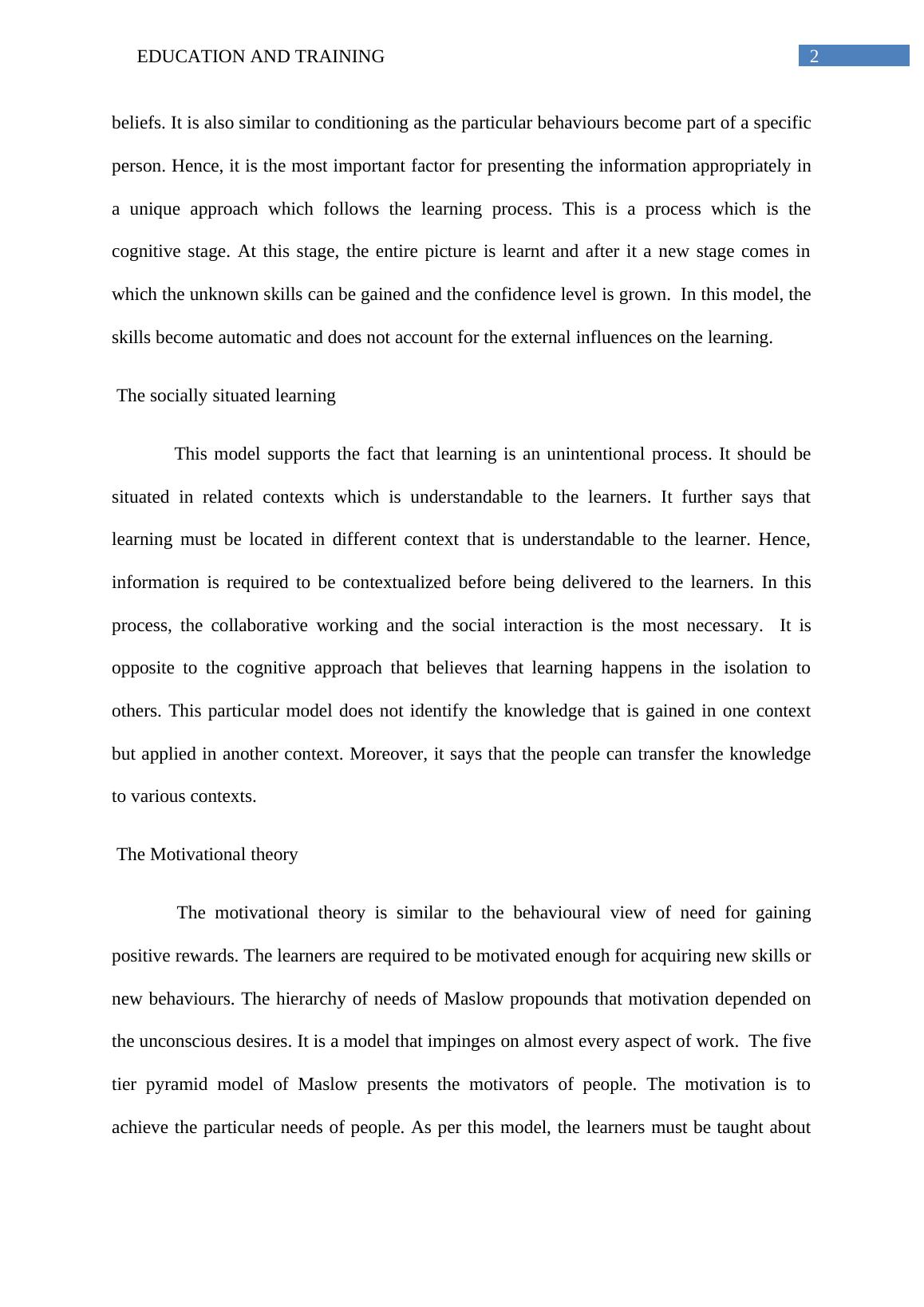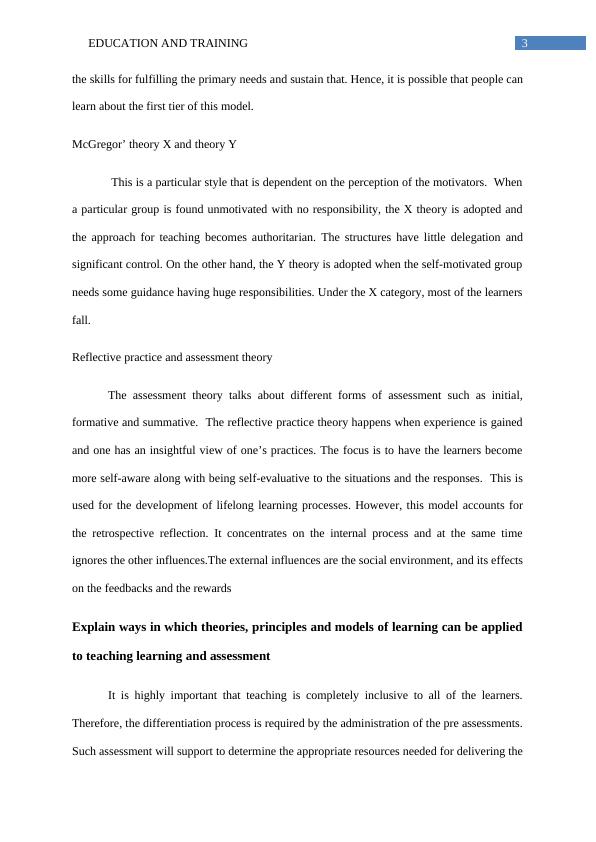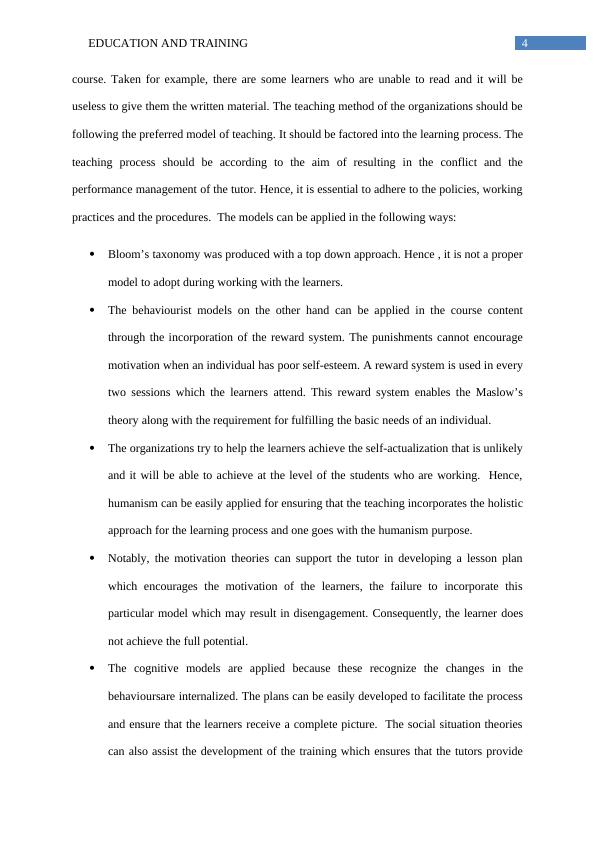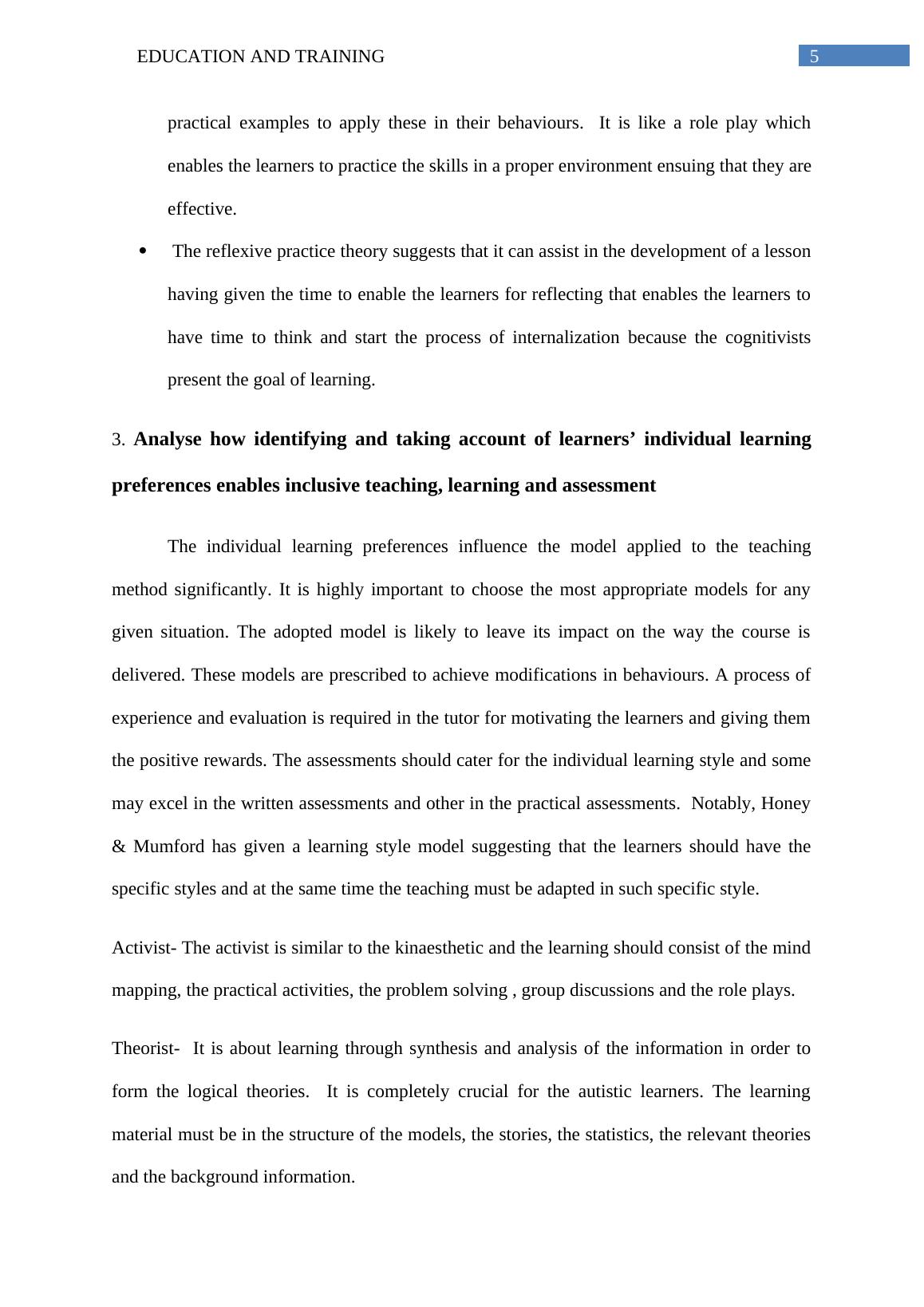Theories, Principles, and Models of Learning and Communication
The assignment is about understanding the application of theories, principles, and models in education and training. It includes analyzing theories, principles, and models of learning, communication, and assessment.
22 Pages6217 Words1 Views
Added on 2023-01-12
About This Document
This document analyzes various theories, principles, and models of learning and communication and discusses their application in teaching, learning, and assessment. It explores Bloom's Taxonomy, humanism, cognitivism, socially situated learning, motivational theory, McGregor's theory X and theory Y, and reflective practice and assessment theory. It also examines how identifying and taking account of learners' individual learning preferences enables inclusive teaching, learning, and assessment. Additionally, it discusses theories, principles, and models of communication and their impact on teaching and learning. Finally, it analyzes theories, principles, and models of assessment, including initial/diagnostic, formative, and summative assessments.
Theories, Principles, and Models of Learning and Communication
The assignment is about understanding the application of theories, principles, and models in education and training. It includes analyzing theories, principles, and models of learning, communication, and assessment.
Added on 2023-01-12
ShareRelated Documents
End of preview
Want to access all the pages? Upload your documents or become a member.
Learning Theories in Health and Social Care
|10
|788
|230
Under the Leranining Process.
|9
|472
|33
Understanding the Learning Process
|3
|1876
|2
Under the Learning Process in Health and Social Care
|22
|5797
|33
Neuroscience Research and Early Childhood Sector
|12
|3392
|371
Education Curriculum Development
|7
|1367
|2

